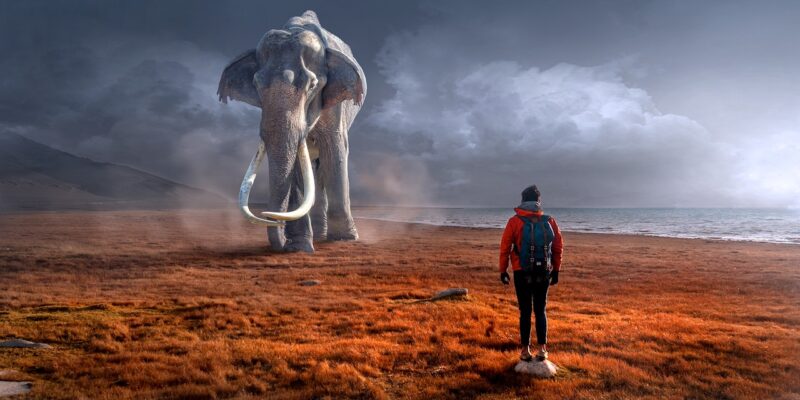Why Certain Mythical Creatures Continue to Captivate Us Across Generations
November 17, 2024

Mythical creatures have wandered the realms of human imagination for centuries, encapsulating the fears, hopes, and dreams of different cultures throughout history. Their extraordinary abilities, otherworldly appearances, and moral complexities render these entities timeless symbols that continue to captivate people across generations. This article delves into the rich tapestry of mythical creatures, exploring why they have enchanted humanity for ages and how they remain relevant in modern storytelling and popular culture.
1. The Origins of Mythical Creatures
The roots of mythical creatures can be traced back to ancient civilizations where storytelling was a way to explain the unknown. Cultures worldwide created myths to provide context for natural phenomena, human behavior, and the moral lessons of their time. From the majestic unicorn of European folklore to the cunning kitsune of Japanese tradition, each creature reflects societal norms, cultural nuances, and fears specific to its time and place.
For instance:
- Greek Mythology: Creatures like the Minotaur and Medusa symbolize the duality of human nature – the conflict between order and chaos, beauty and monstrosity.
- Norse Mythology: Beings such as trolls and frost giants embody the turbulent contrasts of nature faced by the ancient Norse, integrating lessons about respect for the natural world.
- Indian Mythology: Creatures like the Naga (serpentine beings) represent the balance of life, encompassing both earthly and celestial realms, urging individuals to understand the interconnectedness of existence.
As humanity evolved, so did the myths, keeping these legendary beings alive and resonant across cultural and temporal boundaries.
2. The Symbolism Behind Mythical Creatures
At their core, mythical creatures serve as symbols representing the collective anxieties, aspirations, and values of societies. They often personify ideas that transcend the limitations of reality and give form to human fears and desires.
Some prominent examples include:
- Dragons: Often seen as both a protector and a destroyer, dragons symbolize the duality of power. They represent greed, but also wisdom and strength, embodying the unpredictable nature of power dynamics in society.
- Fairies: Typically seen as mischievous yet enchanting, fairies represent the complexities of nature and the less predictable aspects of life. They remind us of the balance between human desires and the elements beyond our control.
- Mermaids: Their allure and tragedy make them a symbol of unattainable beauty and the dangers of romanticized illusions. Mermaids encapsulate the inner conflicts of masculinity and femininity, allure and danger, binding them to deep psychological themes.
By embodying these themes, mythical creatures resonate meaningfully with people, allowing them to navigate their own struggles and experiences through comforting metaphors.
3. The Role of Mythical Creatures in Modern Storytelling
In today’s fast-paced world, where technology and science dominate our understanding of the universe, these mythical beings hold a curious position—they continue to thrive in literature, cinema, and art. This is largely due to their ability to bridge the gap between the real and the fantastical, offering an escape from everyday life.
Consider the following examples:
- Literature: The enduring popularity of fantasy novels such as J.K. Rowling’s “Harry Potter” series and J.R.R. Tolkien’s “The Lord of the Rings” showcases how mythical creatures have adapted to modern narratives, often representing the fight against adversity and the power of friendship.
- Cinema: Movies like “Pan’s Labyrinth” and “Avatar” creatively employ mythical creatures to represent complex themes such as innocence lost and harmony with nature, thereby inviting audiences to explore deeper reflections on society’s values and direction.
- Video Games: Popular games like “The Legend of Zelda” and “Final Fantasy” bring mythical creatures into interactive storytelling, allowing players to engage with these beings in ways that were never possible before. This not only preserves these creatures’ relevance but also allows them to become integral parts of contemporary mythology.
The versatility of mythical creatures ensures their continuous evolution alongside humanity’s changing narratives, maintaining them as iconic symbols that spur creativity and imagination.
4. The Psychological Appeal of Mythical Creatures
A significant part of the allure of mythical creatures lies in their psychological resonance with our collective psyche. Carl Jung’s theory of archetypes posits that mythical figures serve as vivid reflections of universal human experiences, encapsulating our deepest fears, desires, and aspirations.
This archetypal representation manifests in various forms:
- The Heroic Journey: Creatures often accompany heroes on their quests, symbolizing the challenges and triumphs in our personal journeys. Think of the phoenix, symbolizing rebirth and resurrection, representing hope and the potential for transformation post-adversity.
- Mystique and the Unknown: Many mythical creatures embody elements of the unknown, serving as a metaphor for our fears and uncertainties about life. Examples include werewolves and vampires, representing the dual nature of humanity and our struggles with identity.
- Inspiration and Imagination: Creatures like the griffin or the chimaera ignite our imaginative capabilities, representing the unlimited potential of the mind to create and innovate, regardless of societal constraints.
This psychological tie allows people to connect emotionally with these beings, fueling their ongoing relevance across different ages and cultures.
5. The Cultural Impact of Mythical Creatures
The cultural significance of mythical creatures extends beyond mere storytelling. They serve as powerful symbols for various social movements and cultural narratives. In this modern era, creatures like the dragon and phoenix have been adopted in various cultures as symbols of resilience, strength, and change.
Several examples illustrate this:
- Environmental Advocacy: Creatures such as the green dragon in environmental campaigns symbolize the need for sustainability and protection of our planet, tapping into age-old symbolism to promote modern concerns about ecology and conservation.
- Cultural Diversity: Many contemporary narratives tend to reframe mythical creatures to suggest inclusivity, allowing characters like werewolves and vampires to be emblematic of marginalized communities navigating acceptance and identity in society.
- Social Change: Creatures can serve as icons for movements, such as unicorns for LGBTQ+ pride, representing uniqueness, acceptance, and love in the continual fight against discrimination.
The cultural adaptability of mythical creatures allows for critical discussions on relevant issues within society while ensuring that these timeless beings are more than just remnants of ancient tales.
Conclusion: The Everlasting Fascination
Mythical creatures continue to capture our imagination for a multitude of reasons, ranging from their origins steeped in ancient history to their multifaceted symbolism and cultural adaptability. As vessels of human experience, they resonate deeply with our individual and collective struggles, fears, and aspirations.
These beings serve as reminders of the power of storytelling and the eternal connection between humanity and the imagination. Through literature, film, and culture, they endure as symbols of hope, wonder, and exploration.
Whether facing a dragon in battle or seeking guidance from a wise old sage, these mythical creatures invite us to dream beyond reality, making them integral to the human experience across generations. The enchantment they cast may just be the strongest magic of all—an everlasting fascination that transcends time itself.







